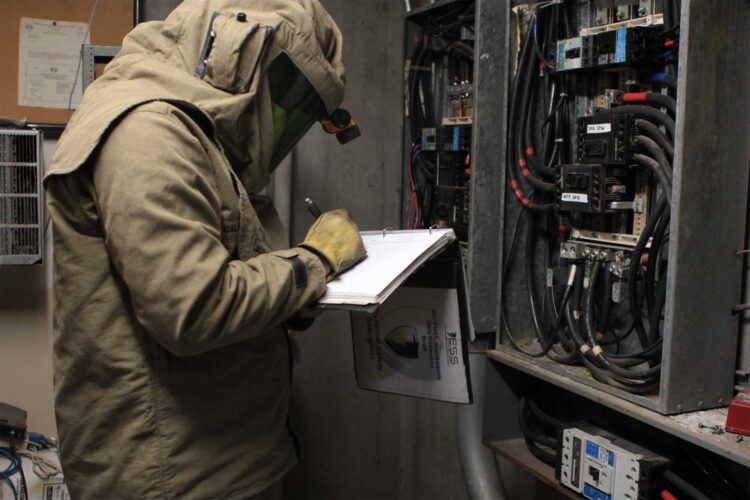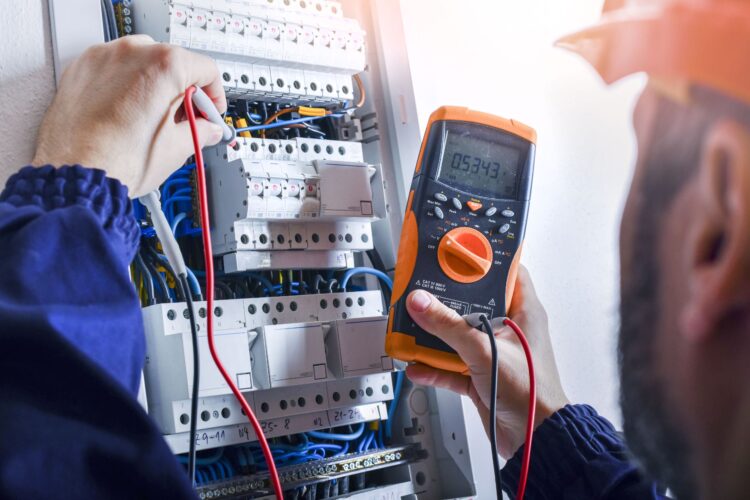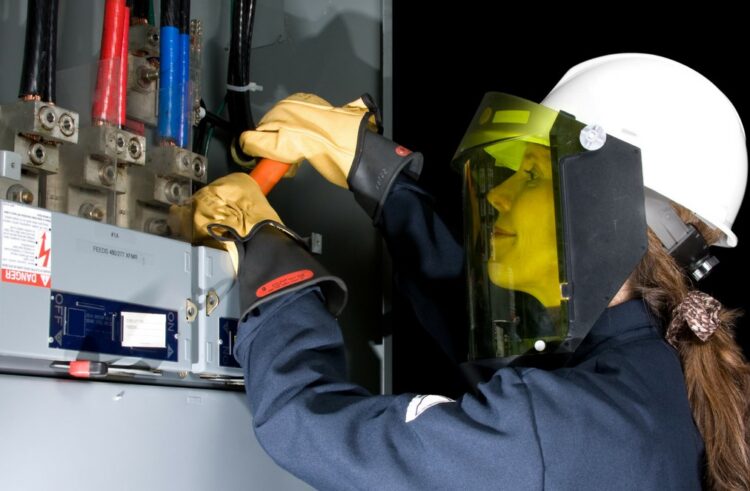All industries carry some level of risk. However, some come with greater risk than others. For instance, road construction, power generation plants, and large factories carry the risk of serious electrical hazards, also known as arc flash, to those involved than other kinds of businesses.
An arc flash, also known as a flashover, is an electric explosion or discharge that is caused by an air or ground connection from one voltage point to another within an electrical system.
Unfortunately, while an it may last only briefly, the maximum temperature can reach upwards of 20,000°C. For reference, the temperature at the sun’s surface is 5,600°C.
As you can imagine, the injuries for any human caught in between are usually serious and may range from severe skin burns, internal burns, hearing loss, and vision loss. Not forgetting, breathing in the hot gasses produced can also cause intoxication.
Now, while arc flashes are more common in some industries than others, no business that uses electric systems in one way or another is 100% safe.
What is an Arc Flash Study?

As a business owner, there are some measures you can take to deal with potential arc flashes.
For instance, you can enforce safe work practices, requiring only experienced workers with appropriate personal protection equipment to work with hazardous electrical systems.
However, the surest way to protect you and your business from arch flashes is through prevention.
That is an arc flash study. It analyzes a facility or business premises for any risks and dangers related to electrical installations.
An electrical safety specialist or engineer with specific experience in short circuit studies, power quality, IEEE 1584 and NFPA 70E is responsible for this assessment.
Usually, this study tells you, as the business or facility owner, your arc flash risk level, including areas of low risk, as well as high risk of such an incident. From there, you can decide the appropriate measures to mitigate such risk and ensure a safe work environment.
How is Arc Flash Analysis Conducted?
An arc flash analysis is usually comprehensive and includes several steps. These are:
- Documentation/ field survey: This includes gathering all electrical drawings and, if unavailable, conducting a detailed survey to establish the facility’s electrical distribution.
- Verification: Next, the engineer surveys each site to verify what they already have on paper.
- Loading to Arc Flash Software: Once all information has been gathered and verified, it’s loaded onto specialized Arc Flash software for in-depth analysis.
- Short Circuit Evaluation: This involves testing whether your protective devices can comfortably clear the available fault currents.
- Coordination Study: Here, the engineer tests whether your system is well coordinated and can handle faults within certain areas without impacting other connected areas.
- Arc Flash Assessment: The condition of your electrical equipment, including the incident energy levels, is evaluated, and recommendations are given.
- Proper Labeling and Training: Lastly, appropriate arc flash warning labels, with information on current incident energy, safe working distance, and required PPE, are placed in high-risk areas. Staff directly involved with electrical systems are also provided training on avoiding arc flash accidents and protecting themselves if they happen.
Benefits of an Arc Flash Analysis

Conducting regular arc flash studies comes with many benefits. Some of these include:
Greater Safety for Your Workers
As a business owner, it’s your responsibility to create a safe work environment for your workers. Faulty electrical systems pose one of the biggest risks to employee safety.
Unfortunately, electrical incidents almost always lead to serious repercussions, including severe injury or even death.
Arc flash studies help you detect potential electrical hazards early so that you can take measures to correct them, thereby increasing workplace safety.
Reduced Risk of Property Damage
An arc flash is usually accompanied by an arc blast. While the arc flash refers to the light and heat produced in an explosion, an arc blast is typically the massive pressure wave that follows.
This pressure is enough to throw anyone close to the ground, as well as damage machinery, equipment, and other installations that may be nearby.
This, and the possibility of the heat causing a fire, can cause devastating financial losses for your business.
Increased Systems Reliability
An arc flash can definitely lead to equipment breakdown. If you depend on the affected machines to run your core operations, this can ground your business, consequently causing losses.
Running electrical safety studies can lower the risk of equipment breakdown, increasing business productivity and reducing downtime.
Compliance with Electrical Safety Standards
As a business, you are required to comply with regulations and standards set out by the Occupational Safety and Health Administration (OSHA), the National Electrical Code (NEC), and the National Fire Protection Association (NFPA), among other relevant bodies. This includes identifying possible electrical hazards and implementing corrective measures.
So, Does Your Business Need One?

With everything said, not every business is legally required to conduct arc flash studies. However, if you are in a state that has adopted the latest version of NEC, a risk assessment is a must for the following:
- Any facility where a worker handles or works near electrical equipment of 50V and above.
- Any business that has operating equipment that’s rated 1200A and above.
That said, the law is pretty lax when it comes to enforcing safety measures against arc flashes.
But that doesn’t mean your business should too. Given the seriousness of an electrical incident, you really don’t want to take any chances. So, yes, if your business is involved in any energized work, you need an arc flash study.
The answer is still yes, even if you don’t do the work directly; that is, you have contractors to do the job.
That’s because something as minor as doing a visual inspection or working near an energized system may still pose a risk to your employees.
Protect Yourself, Your Business, and Employees with an Arc Flash Risk Assessment
If you’re a facility that has or deals with high-voltage electrical systems, arc flashes are an ever-present risk. And when they do happen, the repercussions are often devastating.
So, don’t wait for the worst to happen. Get an arc flash risk study done today.







